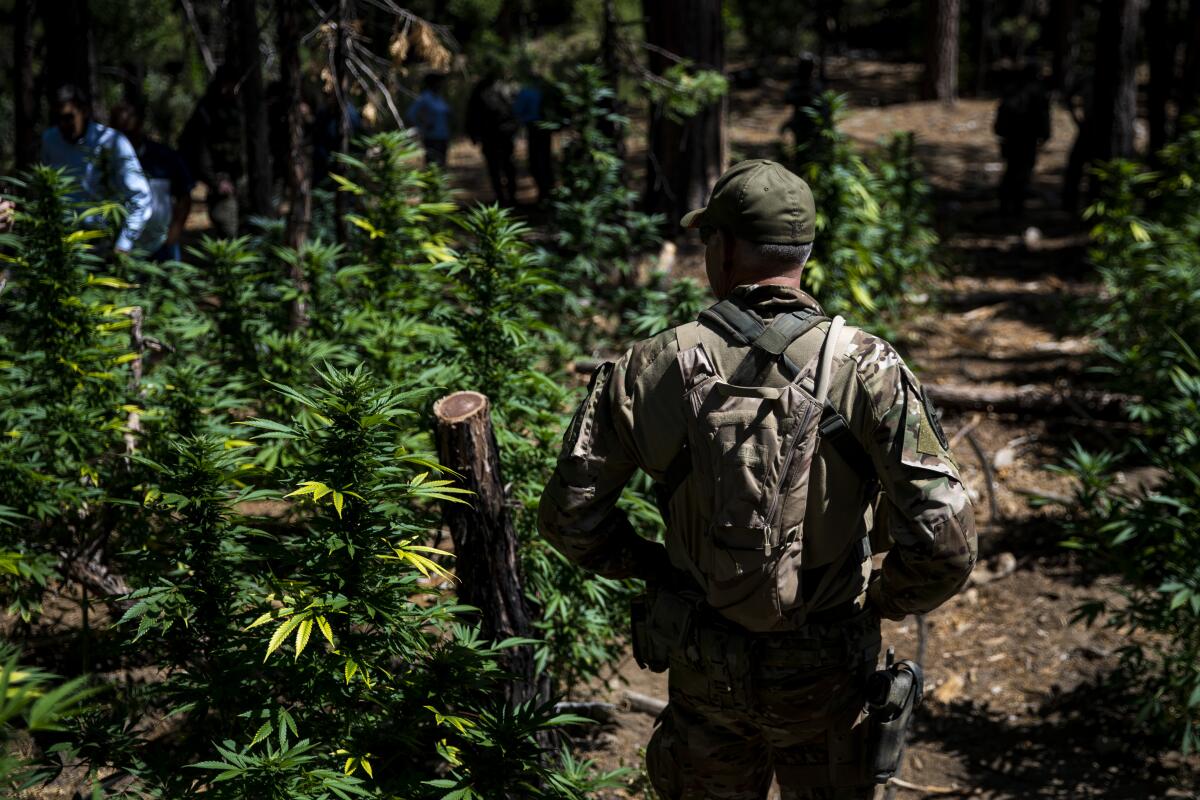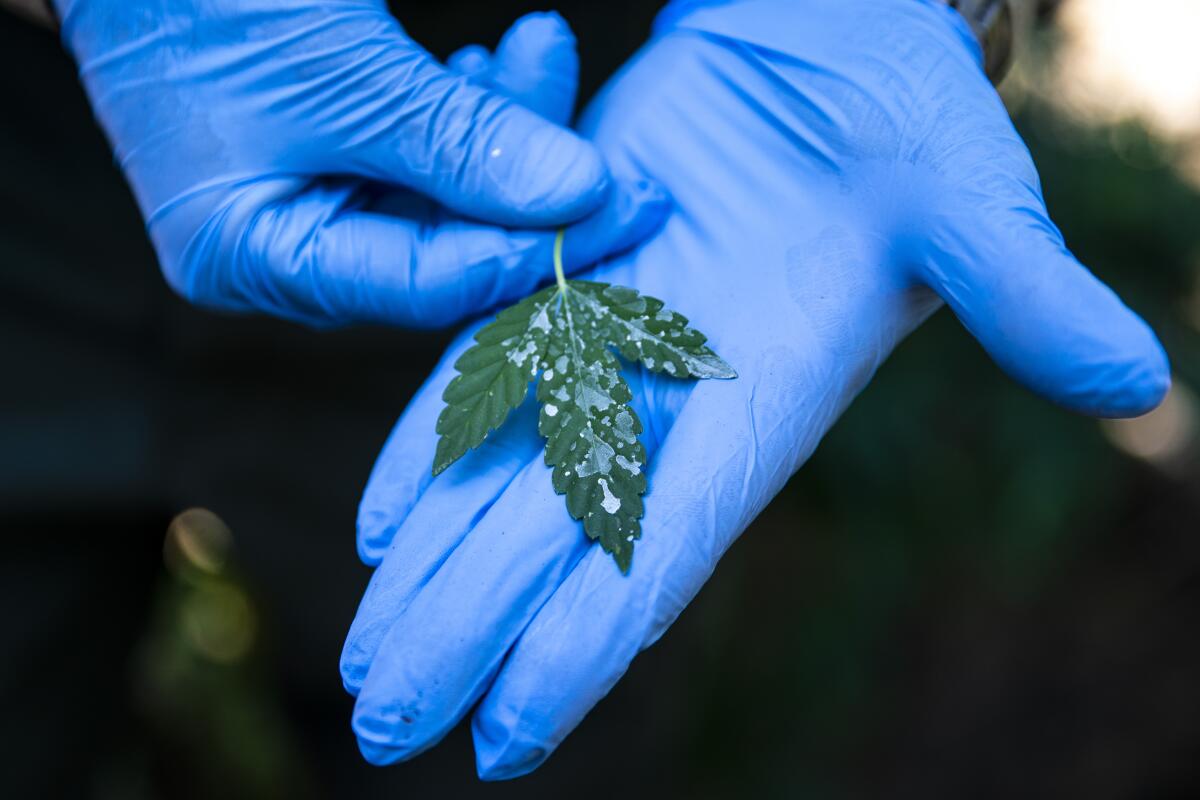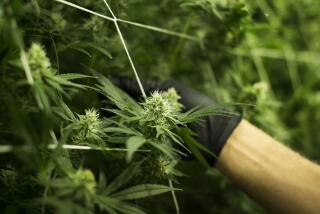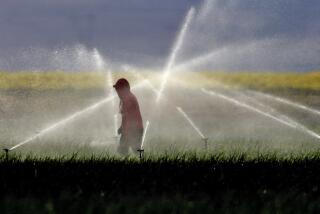Mexican marijuana traffickers are poisoning California forests with a banned pesticide, officials say

California law enforcement has learned that Mexican drug traffickers are using a dangerous pesticide banned in the United States to grow marijuana in remote areas of California’s Sierra Nevada mountains, and are going after their operations.
The pesticide, carbofuran, is toxic to wildlife and humans and can cause permanent reproductive damage. Law enforcement took reporters on a tour of one of the illegal grow sites on Tuesday, where a bottle of carbofuran could be seen.
“These are federal lands, and they are being systematically destroyed through clear-cutting, stream diversion, chemicals and pesticides,” said U.S. Atty. McGregor Scott at a news conference, where he was joined by federal, state and local officials who were part of the investigation. “It’s a vitally important issue.”

The illegal grow site consisted of an estimated 6,000 marijuana plants embedded into a rugged stretch of the Sierra National Forest in Madera County, near Dutch Oven Creek.
U.S. Forest Service agents raided the site on Monday. At least one man fled, but two suspected drug traffickers, Lester Eduardo Cardenas Flores and Luis Reyes Madrigal, both of Michoacan, Mexico, were apprehended, authorities said. They were formally charged Tuesday in federal court in Fresno with conspiracy to manufacture and distribute large quantities of marijuana.
The Dutch Oven Creek site was intact just as the growers had left it — cannabis plants growing amid a forest that had been cleared. The camp included a bed frame, sleeping bags, stockpiles of fertilizers and hazardous chemicals, and a mostly full bottle of tequila on a wood round serving as a table.
Experts say carbofuran is so hazardous that a teaspoon will kill a full-grown bear. Partly because of illegal grow sites, traces of carbofuran’s deadly chemical composition have been detected in streams and rivers, and found in animals — living and dead — including threatened species such as the Pacific fisher.
“It’s a web of death that happens,” said Mourad Gabriel, co-director of the Integral Ecology Research Center, a natural-resource nonprofit that has spearheaded the effort to track the environmental impacts of trespass grow sites, and also leads the charge to clean them up.
Grow sites also divert water from streams. The Dutch Oven Creek site, with its 6,000 plants, was poaching a minimum of 5.4 million gallons of water a year.
“Water is the most important issue in California, and the amount being used to grow an illegal product in the national forest is mind-boggling,” said Scott. “If we could divert that water use to legitimate uses, it would go a long way to helping us to solve that problem.”






